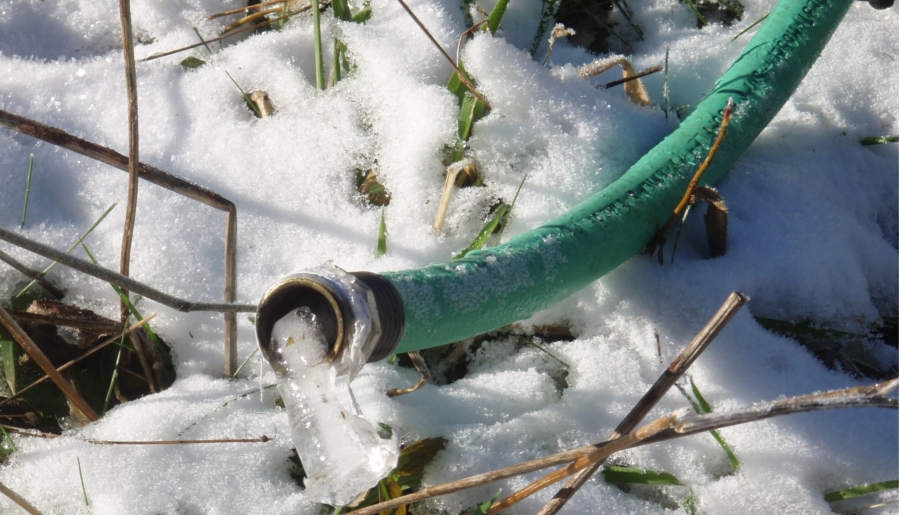The cold resistance of rubber refers to the ability to maintain rubber elasticity and normal operation at a specified low temperature. Vulcanized rubber at low temperature, due to the rapid deceleration of relaxation process, hardness, modulus and molecular friction increase, elasticity significantly reduced, resulting in a decrease in the working capacity of rubber products, especially in the dynamic conditions are particularly prominent, when the temperature drops to the elastic limit of the use of temperature, rubber will harden and shrink, resulting in leakage failure of seals. The cold resistance of vulcanized adhesive mainly depends on the two basic characteristics of polymer: vitrification transformation and crystallization.
Both will cause the rubber to lose its elasticity at low temperatures. The choice of cold-resistant gelatin is the key to cold resistance, the cold resistance of rubber mainly depends on the variety of rubber. For non-crystalline rubber, the vitrification temperature is low and the cold resistance is better. For crystalline rubber, the cold resistance should take into account the level of vitrification temperature, crystallization situation. Increasing the flexibility of rubber molecular chains, reducing intermolecular forces and spatial resistance, and weakening the regular rubber composition and structural factors of the large molecular chain are beneficial to improve the cold resistance of rubber.
Rubber is used as a common method to adjust the cold resistance in rubber formulation design, such as SBR and BR, NBR and NR, CO, ECO, can improve the cold resistance of rubber. The type of cross-linked bond affects the cold resistance of rubber. When natural rubber uses the traditional vulcanization system, with the increase of sulfur dosage, until 30 parts, its shear modulus increases, and the vitrification temperature increases (which can rise to 20~30℃). Choosing an appropriate and effective vulcanization system, the rubber vitrification temperature is 7 ℃ lower than the traditional vulcanization system. Therefore, NR and SBR, DCP vulcanization has the best cold resistance, with autumn lamb vulcanization, cold resistance has been reduced, and sulfur/sub-sulfonyl agent vulcanization of the worst cold resistance. The reason for the above difference is that when sulfur is vulcanized, when the sulfur bond is generated, the cross-linking bond of the molecule is also generated, and the cyclic reaction occurs, so the activity of the chain is reduced, the elastic modulus is increased, and the vitrification temperature rises. When reducing the amount of sulfur, using semi-effective or effective vulcanization system, the number of sulfur bonds decreases, mainly the generation of single sulfur bond and disulfide bond, the possibility of binding sulfur in the molecule is reduced, so the vitrification temperature rises more than the sulfur bond is small. When vulcanized with peroxides and radiation, its cold resistance is better than that of effective vulcanization system and traditional vulcanization system, because the volume expansion coefficient of peroxide vulcanized adhesive is larger. The volume expansion coefficient is large, which can increase the free space of the chain activity, which is beneficial to the reduction of vitrification temperature. In addition, peroxide vulcanization, the formation of a firm, short C-C cross-linked key, and the use of sulfur vulcanization, will form a small firmness, a larger length of the multi-sulfur bond, so in the event of deformation, to overcome the inter-molecular force will be larger, at the same time weak bond distortion, which increases the lag loss, increase the creep rate, The viscous resistance part of the vulcanized adhesive is larger than that of the peroxide vulcanized adhesive.
In other words, in the sulfur sulfide rubber, the force between the molecules is much larger, which is the reason why the cold resistance of vulcanized glue is poor. The effect of fillers on the cold resistance of rubber depends on the structure formed by the interaction between the filler and the rubber.
Increase the amount of glue, reduce the amount of filler, the addition of fillers will hinder the change of chain configuration, increase the rigidity of fillers, so can not expect to add fillers to improve the cold resistance of rubber. In addition, the reasonable selection of softening plasticizing system is an effective measure to improve the cold resistance of rubber products, adding plasticizer, can make the rubber vitrification temperature drop. The cold resistance of nitrile rubber, neoprene and other polar rubber, mainly by adding appropriate plasticizers to improve its cold resistance. Because plasticizers can increase the flexibility of rubber molecules, reduce the force between molecules, so that the molecular chain is easy to move, so polar rubber to choose its polarity similar to the solubility parameters close to the plasticizer. The type and dosage of softening plasticizer are very important to the cold resistance of rubber.




Leave a comment
Make sure you enter all the required information, indicated by an asterisk (*). HTML code is not allowed.